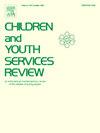Exploring adolescent & youth worker perspectives in co-creating a smoking prevention intervention
IF 1.7
2区 社会学
Q1 FAMILY STUDIES
引用次数: 0
Abstract
Background
Smoking initiation disproportionately affects certain population groups, including adolescents experiencing societal vulnerability. Co-creation, an innovative approach, contributes to developing tailored interventions that address smoking initiation disparities. For this study, a smoking prevention intervention was co-created with adolescents and youth workers from two youth social work organisations. This paper analyses the perspectives of participants engaged in this co-creation process.
Methods
Data were collected sequentially throughout the process of co-creative intervention design and involved two focus group discussions with seven adolescents each (of which six participated in both focus groups) and semi-structured interviews with five youth workers. A reflexive thematic analysis was performed.
Results
Three main themes emerged from the data, capturing the co-creation process: active involvement and engagement, creating meaning, and capacity building. These themes were influenced by specific contextual factors (i.e. the physical environment of youth social work organisations and the social context, such as group dynamics) and demonstrated dynamic interactions, rather than existing independently.
Conclusion
This study gives insights into the collaborative dynamics and processes that emerged throughout our co-creation process, enabling us to give recommendations for future co-creation projects. Incorporating innovative and creative methods into the co-creation process, such as the co-creation camp, appeared to be particularly impactful in fostering collaboration, trust, and a safe space for sharing opinions. Key recommendations include prioritizing inclusivity, adapting methods to participants’ needs, considering contextual influences, and ensuring the process is both enjoyable and meaningful.
探讨青少年和青年工作者在共同创建预防吸烟干预方面的观点
背景:开始吸烟对某些人群的影响不成比例,包括处于社会弱势的青少年。共同创造是一种创新方法,有助于制定有针对性的干预措施,解决开始吸烟的差异。在这项研究中,来自两个青年社会工作组织的青少年和青年工作者共同创建了一个预防吸烟的干预措施。本文分析了参与这个共同创造过程的参与者的观点。方法在共同创造干预设计的整个过程中依次收集数据,包括两个焦点小组讨论,每个小组讨论7名青少年(其中6人参加了两个焦点小组)和对5名青年工作者的半结构化访谈。进行了反身性主题分析。结果从数据中可以看出三个主题,它们反映了共同创造的过程:积极参与、创造意义和能力建设。这些主题受到特定背景因素(即青年社会工作组织的物理环境和社会背景,如群体动态)的影响,并表现出动态的相互作用,而不是独立存在。本研究深入了解了我们共同创造过程中出现的协作动态和过程,使我们能够为未来的共同创造项目提供建议。在共同创造过程中加入创新和创造性的方法,如共同创造营,似乎在促进合作、信任和分享意见的安全空间方面特别有效。主要建议包括优先考虑包容性,使方法适应参与者的需求,考虑环境影响,并确保过程既愉快又有意义。
本文章由计算机程序翻译,如有差异,请以英文原文为准。
求助全文
约1分钟内获得全文
求助全文
来源期刊

Children and Youth Services Review
Multiple-
CiteScore
6.30
自引率
6.10%
发文量
303
期刊介绍:
Children and Youth Services Review is an interdisciplinary forum for critical scholarship regarding service programs for children and youth. The journal will publish full-length articles, current research and policy notes, and book reviews.
 求助内容:
求助内容: 应助结果提醒方式:
应助结果提醒方式:


